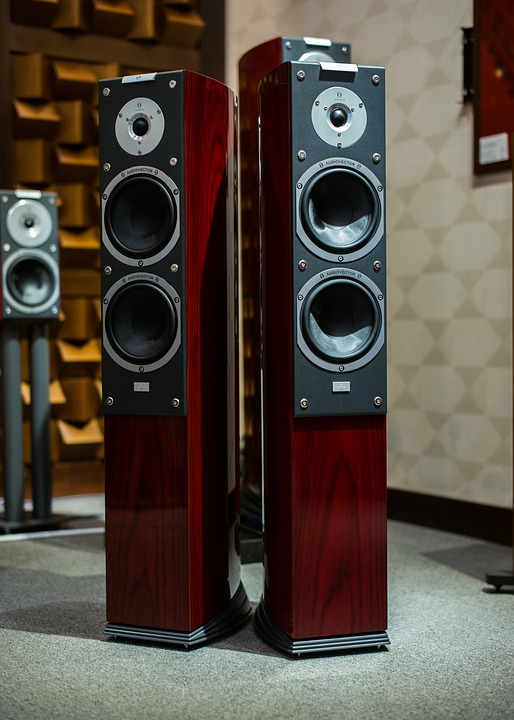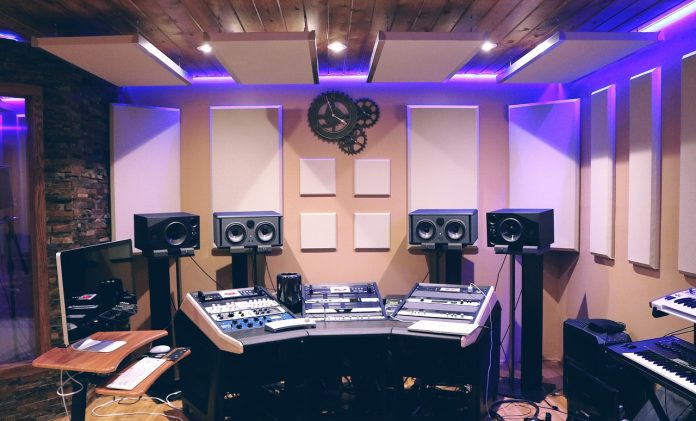Whenever any music enthusiast buys an audio monitor, they expect to get the most bang for their buck. As a result, most will look into buying other audio accessories to ensure that their devices perform optimally. Additionally, some will focus on enhancing the acoustics of their rooms to steer away from any audio alterations.
However, one mistake that most people often commit when choosing audio monitors is to forget to pick one that fits their room size. The size of your room and that of your monitor will greatly determine the type of experience that your audio devices can offer.
Here is a guide for picking the right audio monitor to fit your room size:
Why Your Room Size Matters?
The bigger a speaker is the better it is for producing audio at low frequencies. It’s the reason most producers who work with bass-based instruments will mainly invest in large speakers. This is true when bearing in mind that the human hearing range lays between 29 Hz and 20 kHz.
In case your aim is to find the best studio monitor for your budget that will mostly play high-frequency sounds, then buying small speakers shouldn’t be an issue. Otherwise, aim to invest in large speakers. Another consideration to make is the size of your room. If you use large speakers in small rooms, then the sound will literally bounce off from one wall to another leading to the detriment of your audio quality.
Factors to Look Into
There is a diversity of elements to factor in when looking to have an amazing audio experience. Firstly, the quality of your speakers will have a great role to play. However, one speaker will perform differently in rooms of different sizes.
Also, the acoustics of the room and the position where you place your speakers will dictate the sound quality which you will enjoy. As a rule of the thumb, consider the setup you plan for your speakers before purchasing them. Here are three other factors to consider:
- Focus on Driver Diameter
In case your aim is to produce low-frequency sounds while working with low-frequency drivers, then it will be best for you to put these monitors in large rooms. On average, such drivers tend to boast a large diameter that ranges between 12, 15 and 18 inches, and a large room will support the kind of low-frequency energy that they produce.
For optimal musical experience, it is paramount to control these speakers before planning to launch them. When launched, the energy should be moderated through the use of low-frequency audio absorption technology. This will also be amazing at handling low-frequency room distortions and preventing them from ruining the quality of your audio.
- Consider Room Reflection
Hard room surfaces such as windows, walls, and mirrors tend to reflect the audio produced by the speakers. Your goal should be to eliminate these reflections as much as possible as they tend to bounce sound off from the walls to your ears. You can either look to use absorption or blocking technology to solve this issue.
This will include plastering the walls and using sound absorption materials. How you set up your monitors will also affect the quality of the audio. For a great experience, place the monitors in a way that they are along the shorter walls of your room.
- Consider the Speaker and Room Height Ratio
When choosing the speakers in terms of height, you ought to consider the size of your ceiling. Generally, you will need to lower your monitor height with regard to your ceiling height. In case the ceiling is 8 inches high, use a monitor that is 4 inches high. Additionally, use a speaker that is 6 inches high for ceilings that are 10 inches high. This will allow the sound to spread evenly throughout your room.
Near Field vs. Far Field Monitors
Small rooms are bad for the reflection of the audio. You will most likely hear both the reflected sound and the sound from the speakers themselves in case the room has poor acoustics. Large rooms, on the other hand, need a different approach to the produced audio to ensure you enjoy the best audio experience in the room.

To enjoy the best audio quality in your small room, consider using near-field speakers. This will allow you to have more of the speaker sound and less of the reflected sound. On the other hand, far field speakers will be best when sitting as far away from the speakers as possible, especially in a big room.
Do You Need a Subwoofer?
Along with quality headphones, subwoofers are part of the list of devices that will enrich your audio experience. While subwoofers can help boost the low ends of your audio to make the sound feel better in both small and large rooms, you can at times over-boost your audio resulting in you mixing your audio too low. For this reason, it is best that you look for subwoofers that will match with your monitors pretty well with minimal friction, and looking for subwoofers of the same make and series as the woofer is essential.
For monitors taller than seven inches, it might not be advisable to add a subwoofer, as this will only result in overwhelming the highs of your audio. On the other hand, speakers that are lower than seven inches might need subwoofers to ensure that the low ends of your audio are transmitted well throughout your room.
Given that bass frequencies produced by subwoofers tend to spread out prominently, it is essential to treat your room acoustically, regardless of its size. Otherwise, you will often end up with a muddy response whereas your audio is by no means questionable. A good option for acoustics treatment would be to employ bass traps in your room corners to prevent the frequencies from bouncing around in your room.
Conclusion
Not every audio monitor will fit perfectly into your room, and it is vital to take some time to pick the right one. In summary, the larger the room is, the larger the monitors and driver diameter that you need. Consider the above guide to ensure an amazing audio experience.

